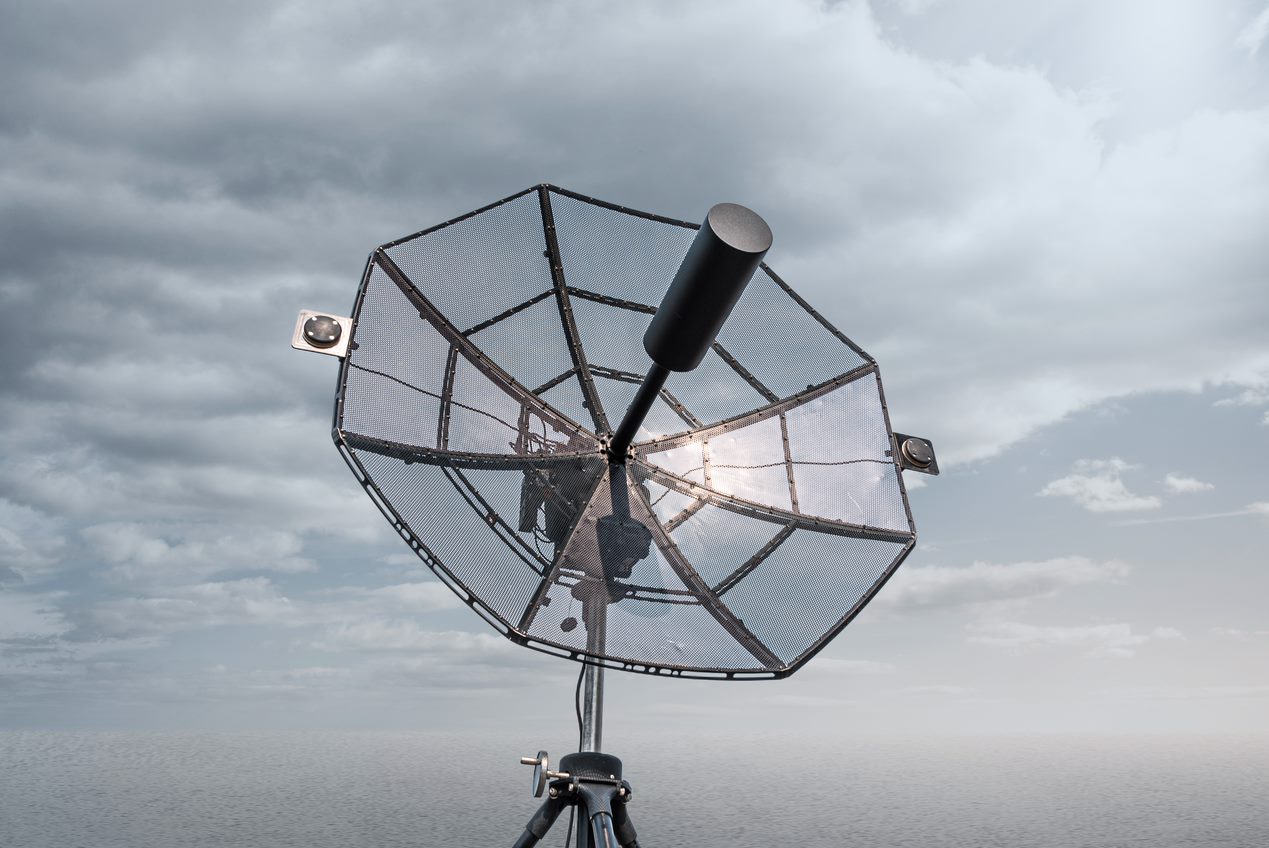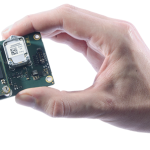Persistent Systems recently introduced the Multi-Band Tracking Antenna with the goal of improving ground-based communication and tracking of friendly manned and unmanned aircraft, even in GPS-denied environments, helping warfighters defend against the threat of electronic warfare (EW) from near-peer adversaries.
The tracking antenna can operate on two RF bands at once and has the ability to find and follow aircraft without relying on a satellite-based tracking system like GNSS or GPS. This capability ensures that connectivity with ISR aircraft is maintained when these systems are disrupted, denied or spoofed. The tracking system remains locked onto the aircraft and mission data continues to flow even when the enemy is actively denying access to GPS, Persistent Systems Senior Program Engineer Ben Wring said.
The company’s original tracking antenna was flexible and enabled the use of L-, S- and C-Bands radios, Wring said, but it was limited to a single frequency. The upgraded antenna uses the majority of the original solution’s parts, but its single multi-band/multi-polarity antenna feed allow it to operate in L-, S-, and C-Bands simultaneously. The feed also has independent horizontal and vertically polarized inputs, enabling polarization diversity and maximizing MIMO (multiple-input, multiple-output) radio capacity.
“By operating on multiple RF bands, you can communicate through adversarial interference,” Wring said. “Whether they deny GPS or attack our transmission directly, the system will maintain connectivity.”
How it works
The tracking antenna system can mount two MPU5 MANET (mobile ad hoc networking) radios, each operating on a different radio frequency (RF) band. When there’s interference, the system automatically uses the band delivering maximum performance—and that’s critical in defending against EW.
“You can run L and S and S and C or whatever combination of the two frequency bands on the tracking system at the same time without having to change the antenna element,” Wring said. “That gives us a very robust solution for congested spectrum usage. So if the S-Band spectrum is cluttered or there’s interference, our system will automatically switch over to the other frequency. And that transition is extremely fast. It’s much like how a cell phone switches from tower to tower as you’re driving.”
The Multi-Band Tracking Antenna supports simultaneous use of an MPU5 with a third-party radio, which benefits from the tracker’s ability to operate in GPS denied environments and transmits to the platform over the same multi-band antenna feed horn.
How it’s being used
UAS are among the systems that can leverage this technology, Wring said. Because of how low they fly, drones are more susceptible to GPS interference and jamming. There’s been a history of aircraft loss because of GPS issues, whether related to a hardware malfunction or active GPS jamming.
“Those aircraft are very dependent on GPS reception not just to navigate the airplane, but to help orient the aircraft in three dimensional space,” he said. “Being able to keep those assets over an objective during a mission in the field is extremely important. If the system has to leave the air, the warfighter no longer has that asset to provide overwatch or target recognition. With us being able to track those assets without a GPS fixture, we can keep them on station quite a bit longer and continue the mission even through GPS interference.”
Maritime represents another area that can benefit from the antenna, Wring said. The U.S. Coast Guard, for example, deploys small boats to intercept suspected drug runners. The ability to leave a manned or unmanned asset overhead as a comms relay to the home ship, without worrying about jamming, helps maintain situational awareness for the boat team, who are traveling beyond the visual range of the ship.
Other benefits
The solution also is lower cost than other systems that provide similar capabilities and much smaller, Wring said. The company’s tracking antenna can be easily shipped over night anywhere in the world and handled by one person rather than two, which isn’t the case with other large solutions.
The ability to mount two radios is also a benefit for UAS.
“A lot of unmanned aircraft still have a separate C2 or command and control link as well as a payload link,” Wring said. “Because of that it’s necessary sometimes to enable those systems to use our radio and a legacy third party radio simultaneously. This broad band tracking system enables that.”
Like the original, the new antenna system is easily deployable and has a range of more than 120 miles. An upgrade kit is available to customers who have the existing antenna.






